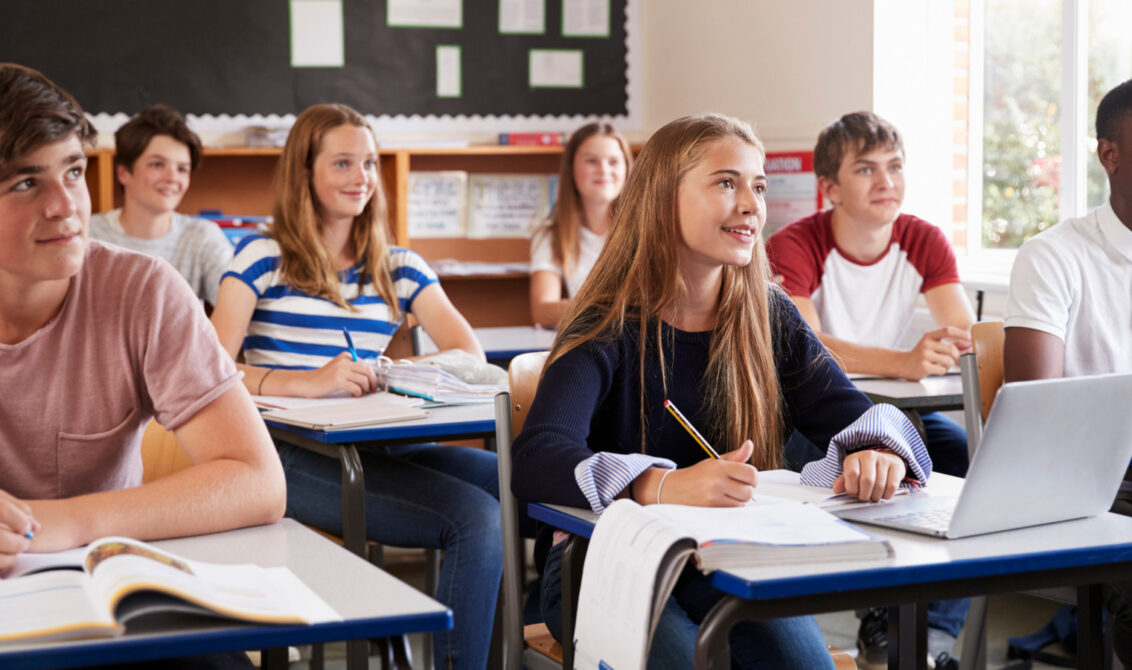
Global citizenship isn’t a new term, but it has become increasingly important in education in recent years. The term refers to people who believe that their identity goes beyond the location where they were born or grew up, and is instead defined by their connection to humanity as a whole. Global citizenship therefore promotes diversity, mutual respect, and equal access to high quality resources.
The digital shift has meant that more people and organisations are working and living across borders. Meanwhile, the global pandemic showed us how essential collective action is for a safe, prosperous world. Global citizenship means participating in, and nurturing, the broader global community, as well as local communities. It is a mindset that complements (not cancels) people’s citizenship. For example, someone may have a passport from a specific nation but still considers themselves a citizen of the world.
Understanding and teaching global citizenship gives students 21st century skills that help them thrive, and – importantly – ensure that everyone else thrives too.
Understanding global citizenship
So, why is it important to bring global citizenship into the classroom? Well, people are more connected than ever. This interconnectedness brings about a sense of shared responsibility – what happens both on our doorstep and over oceans impacts us. It also creates an awareness of new perspectives and realities, heightens empathy, and ignites efforts to address global challenges together.
Human rights and social and environmental responsibility are at the heart of global citizenship. That means striving towards goals like eradicating poverty, inequality, climate change, and social injustice. For many citizens of the world, advocacy, sustainable practices, and community engagement are the core tools to achieve these goals.
Why global citizenship matters in education
Teaching students about global citizenship, plus encouraging them to be global citizens, comes with a number of benefits. It provides students with a more comprehensive perspective of the world and other people, and allows them to understand complex issues in the global landscape. Not to mention, global citizenship builds a sense of agency and responsibility in young people, and shapes future generations that are committed to positive change.
Global citizenship skills can enhance cultural competence and promote inclusivity too. Students learn how to communicate effectively across different cultures, recognise and advocate for diverse perspectives, and navigate multicultural contexts with sensitivity. Likewise, they develop their own voice and can more easily define their personal values. Not only do these traits pave the way for a more equal, tolerant world, they prepare students for careers and collaborations across the globe.
How to create global citizenship experiences
Global citizenship doesn’t occur in a silo – it requires collaboration and first-hand, real world experiences for students. As educators, providing opportunities for students to be immersed in cultures and places outside of their own should be a priority.
Here are some ideas for incorporating a global citizenship mindset in the classroom are:
- Organise pen pals in other cities, countries, and continents for students to write to
- Read stories from a wide selection of authors depicting their daily lives
- Assign projects where students have to conduct research outside of their familiar scope of knowledge
- Encourage students to share their backgrounds, languages, and cultures within the class
- Volunteer with students in spaces that support vulnerable people in the local community
- Take field trips to informative locations (museums, memorials, galleries)
- Set up ‘global weeks’ where students cook food, play music, and give presentations about various countries
Virtual reality technology can equally allow students to step into far away locations and learn in context. Using VR headsets, students can access historical events, and new places and cultures. They can even interact with characters in those scenarios, and experience simulated situations related to humanitarian crises. This type of learning removes barriers that often keeps students in their immediate lives, and starts to give them the impression that they really are citizens of a much larger environment.
How to build global citizenship partnerships
There are organisations, initiatives, and grants available that can bring the world to your school (and vice versa). These could be international buddy programmes, non-profit organisations, and language exchanges. Try to engage with programmes from a variety of locations, across the spectrum of beliefs and economic standing – the more diverse the partnerships, the more representative they will be of the world.
Model United Nations conferences can be a great way to meet students from around the world and discuss global challenges and diplomatic negotiations. In these meetings, students take on the role of delegates from different nations and carry out debates and propose solutions to world matters. These conferences are rooted in global citizenship and foster critical thinking in students who could be the leaders of tomorrow.
Some possible global citizenship partners include:
- UNESCO
- World Affairs Council
- Peace Corps
- Oxfam, Save the Children, CARE
- iEARN, International Society for Technology in Education
- Global Citizen Education Network
- Embassies and consulates
Global citizenship is essentially just citizenship. We all share the planet, and that means we have a duty to acknowledge everyone’s realities, and to care for our collective home. By teaching global citizenship in the school sphere, teachers and students can work towards some of the greatest world innovations. Learning to be a citizen of the world means richer educational journeys, deeper empathy, and a better life for everyone, everywhere.
Further reading
Read more about topics that fuel global citizenship, including how to put climate change at the heart of education, and life skills for students to practise in the classroom.
Learn more about Pearson’s Global Citizenship curriculum for 5-16-year-olds.
Subscribe to our blog
If you’d like to stay up to date with our latest articles, why not subscribe to our blog? You’ll get a fortnightly roundup of the articles you’ve missed straight to your inbox, plus links to free teaching resources.

